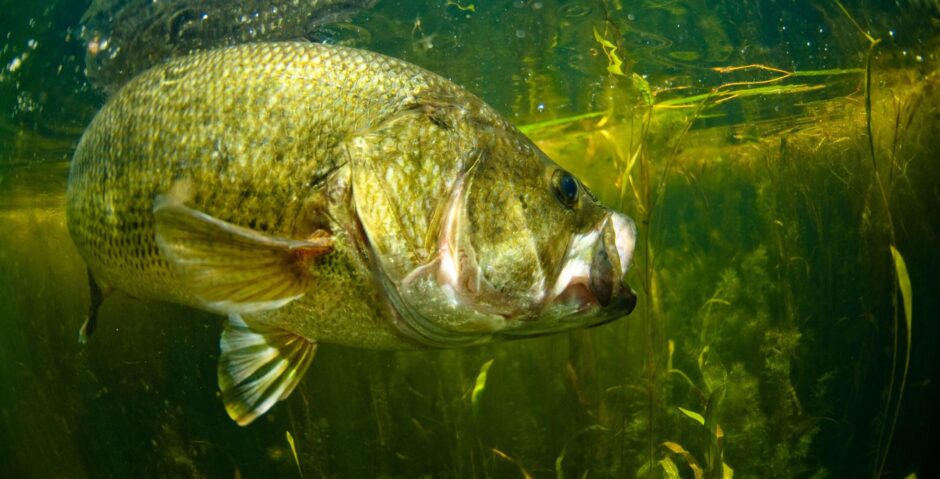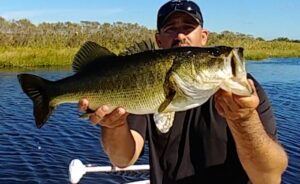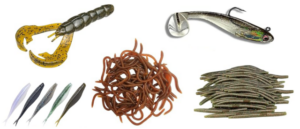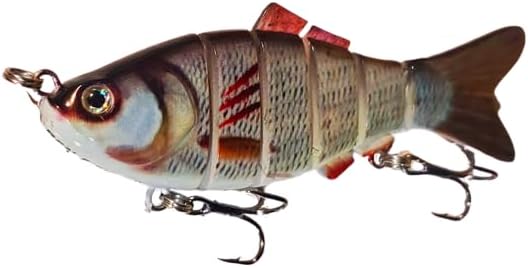Largemouth bass can be found in many different types of lakes. There are plenty of these fish in super clear water lakes and murky-colored reservoirs and just about everything in between.
Seasonal Migrations
The size of the lake or reservoir will dictate what type of migration you see from largemouth bass. On smaller lakes, they don’t have as many options. They will move into the shallows in the spring to spawn and then probably will bounce back from deep to shallow based on their feeding patterns for the rest of the year. Moving from deep to shallow can be a very short distance on small lakes.
On bigger lakes and reservoirs, largemouth bass may move miles. They will move from the main lake basin back into the bays and creeks in the spring. Bass will be all over the shallows through the spawn, then you can usually find some bass shallow and some deep through early summer. Once summer patters set in, you still can always find some bass shallow, but the larger numbers of better quality fish will move offshore out onto the main lake.
In the fall, bass may move back into the shallows or stay deep. It all depends on the bait. On many lakes, the bait fish will move back into the bays and creeks in the fall and the largemouth bass will follow them. Once the water temperatures fall below 60 degrees, you will usually experience a better bite by fishing deeper water. As water temperatures continue to fall below 50 degrees, the fishing will get much tougher.
Shallow Water Cover
Largemouth bass love shallow water cover. This can be weeds, wood, docks and many other types of cover. Basically, largemouth bass like to be around all types of things that can provide cover for them. To fish these spots, you may need to use weedless rigs to avoid all the snags. The shallow water bite is better in the spring and fall, however, some largemouth bass can always be found shallow and some bass will move into the shallows to feed in the morning, evening and at night through the summer.
Flats
The big flats in the spawning bays can be great spots to target largemouth bass in the spring. Mix in some new green weeds on the bottom and you could have a very good spot to catch some bass.
Docks
The docks are some of the best places to fish during the spring for largemouth bass and some bass will relate to the docks from spring through fall. The deeper docks will usually hold more bass, especially from summer through fall.
Points
The points are always good places to try. Some points will hold bass and some won’t and some will have bass move on and off them throughout the day, so you can hit a point several times throughout a day and find different fish relating to that piece of structure. Points with some shallow water and a nice drop-off into deeper water will almost always be better than the points that drop straight down (a ledge) and that stay super shallow. Fish the points in the morning and evening and you’ll have better success.
Rocks & Boulders
Largemouth bass like the weeds and wood more than rocks, but they will be found around the rocks too, especially if a lake has very little vegetation. Rocks usually have crayfish and bass love crayfish, so break out the crayfish baits and you’ll catch more bass.
Weeds
Largemouth bass love weeds. Shallow, deep and everything in between is at least worth checking out. Largemouth bass will bury themselves in the real thick weeds too, so don’t assume that an area with heavy weeds is bad because there isn’t much open water there. From late spring through early fall, the weeds are going to hold lots of largemouth bass.
Wood
Largemouth bass also love wood. Whether it is laydowns along the shorelines, big trees standing straight up out of the water, brush piles or a stump field, bass will be found around the wood at some point in time. Spring and fall are better for the wood on shoreline cover. In the summer, the deeper wood will hold more bass.
Jigs and live bait work best around wood. Flippin’ or pitchin’ a jig will help you get in the tough spots. When you can’t get them to hit a lure, a drop shot rig with some live bait will usually get them to eat. Some anglers like to use soft plastics and topwater baits around wood. These can also be very effective.
[wpinsertshortcodead id="cpgud5f8d881788989"]




